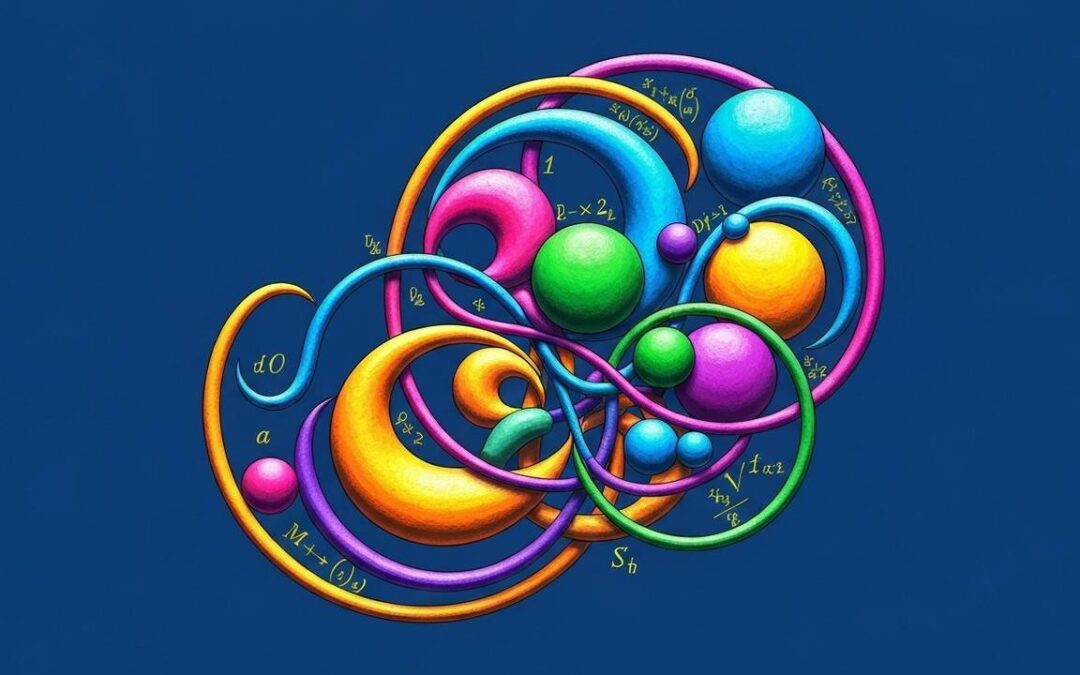L-structures in first-order logic provide a framework for interpreting symbols, and constructing them can seem daunting. Let’s clarify this: an L-structure assigns meaning to symbols within a language. Exploring L-structures with infinite universes reveals the flexibility in defining non-logical symbols. Understanding the constraints and axioms helps to narrow down the possibilities, making the concept of L-structures more accessible. This is key to understanding the model theory.
Table of Contents
- Constructing L-Structures with Infinite Universes
- Freedom in Defining Non-Logical Symbols
- Counting L-Structures on Finite Universes
- Constraints and Axioms
- Isomorphism Classes of L-Structures
- Similar Problems and Quick Solutions
- Problem 1: Determine the number of unary functions on a set with 3 elements.
- Problem 2: Determine the number of binary functions on a set with 2 elements.
- Problem 3: Construct an L-structure with the universe ##\mathbb{Z}## and a unary function ##f(x) = x + 1##.
- Problem 4: Determine the number of ternary relations on a set with 2 elements.
- Problem 5: Construct an L-structure with the universe ##\mathbb{Q}## and a binary function ##g(x, y) = x – y##.
More from me
In first-order logic, an L-structure provides a way to interpret the symbols of a language. This article explores the construction of L-structures with infinite universes and the counting of L-structures on finite universes. We will delve into how these structures are defined and what constraints they must satisfy, providing a clear understanding of their properties and applications. Let’s start with defining an L-structure.
Constructing L-Structures with Infinite Universes
An L-structure consists of a universe and interpretations for the non-logical symbols of the language L. For example, consider a language L with a unary function symbol ##\dot{+}##, a binary function symbol ##\dot{1}##, and a ternary relation symbol ##\dot{<}##. To construct an L-structure with an infinite universe, we can choose the set of real numbers ##\mathbb{R}## as our universe. This universe provides a foundation for interpreting our symbols.
We then need to define interpretations for each of the symbols. For the unary function ##\dot{+}##, we can define it as the identity function: ##\dot{+}(r) = r## for all ##r \in \mathbb{R}##. For the binary function ##\dot{1}##, we can define it as multiplication: ##\dot{1}(r, s) = rs## for all ##r, s \in \mathbb{R}##. Finally, for the ternary relation ##\dot{<}##, we can define it such that ##(r, s, t) \in \dot{<}## if and only if ##r < s < t##. This setup creates a valid L-structure with an infinite universe.
Freedom in Defining Non-Logical Symbols
The flexibility in defining non-logical symbols within an L-structure is quite broad. As long as the interpretations respect the arity of the symbols, almost any definition is acceptable. This freedom stems from the fact that, initially, no axioms are imposed on the structure. The interpretations simply assign meaning to the symbols without requiring them to satisfy any particular properties or relationships. This is fundamental to the concept of L-structures.
For instance, the unary function ##\dot{+}## could be defined as ##\dot{+}(r) = r^2##, or the binary function ##\dot{1}## could be defined as ##\dot{1}(r, s) = r + s##. The ternary relation ##\dot{<}## could be defined arbitrarily, as long as it is a subset of ##\mathbb{R} \times \mathbb{R} \times \mathbb{R}##. This flexibility allows for the construction of a wide variety of L-structures, each with its own unique properties and characteristics. The key is adherence to the basic definitions.
Counting L-Structures on Finite Universes
Now, let’s consider a finite universe ##U = \{a, b, c, d\}##. Suppose we have a unary function ##-## and two binary functions ##+## and ##\times##. To count the number of possible L-structures, we need to determine the number of ways to define each of these functions. This involves understanding the domain and codomain of each function and calculating the possible mappings.
For the unary function ##-##, there are 4 elements in the domain and 4 elements in the codomain, so there are ##4^4 = 256## possible unary functions. For each binary function, there are ##4 \times 4 = 16## elements in the domain and 4 elements in the codomain, so there are ##4^{16}## possible binary functions. Therefore, the total number of possible L-structures is ##4^4 \times (4^{16})^2 = 4^4 \times 4^{32} = 4^{36}##. This calculation gives us the total number of ways to define all the functions, accounting for all possible L-structures.
Constraints and Axioms
The vast number of possible L-structures is reduced when we impose constraints or axioms that the structure must satisfy. Axioms define the properties and relationships that the interpretations of the symbols must uphold. By adding axioms, we restrict the possible interpretations, thereby narrowing down the number of valid L-structures. This is a crucial step in model theory, where the focus is on structures that satisfy specific sets of axioms.
For example, if we require the binary function ##\dot{1}## to be commutative, i.e., ##\dot{1}(r, s) = \dot{1}(s, r)## for all ##r, s##, then we eliminate many possible interpretations. Similarly, if we require the ternary relation ##\dot{<}## to be transitive, we further reduce the number of valid L-structures. The addition of axioms transforms the problem from simply counting possible interpretations to identifying interpretations that satisfy specific logical properties.
Isomorphism Classes of L-Structures
Classifying L-structures involves grouping them into isomorphism classes. Two L-structures are isomorphic if there exists a bijection between their universes that preserves the relations and is compatible with the functions. This means that the structures are essentially the same, differing only in the names of the elements in their universes. Identifying isomorphism classes helps to reduce the complexity of studying L-structures by focusing on representative structures from each class.
For example, consider two L-structures with the same finite universe ##U = \{a, b, c, d\}##. If there exists a bijection ##f: U \to U## such that for all ##r, s \in U##, ##f(\dot{1}(r, s)) = \dot{1}(f(r), f(s))## and ##(r, s, t) \in \dot{<}## if and only if ##(f(r), f(s), f(t)) \in \dot{<}##, then the two L-structures are isomorphic. Classifying L-structures into isomorphism classes provides a more refined understanding of their properties and relationships.
Similar Problems and Quick Solutions
Problem 1: Determine the number of unary functions on a set with 3 elements.
Solution: There are ##3^3 = 27## possible unary functions.
Problem 2: Determine the number of binary functions on a set with 2 elements.
Solution: There are ##2^{2^2} = 2^4 = 16## possible binary functions.
Problem 3: Construct an L-structure with the universe ##\mathbb{Z}## and a unary function ##f(x) = x + 1##.
Solution: The L-structure is ##(\mathbb{Z}, f)## where ##f(x) = x + 1##.
Problem 4: Determine the number of ternary relations on a set with 2 elements.
Solution: There are ##2^{2^3} = 2^8 = 256## possible ternary relations.
Problem 5: Construct an L-structure with the universe ##\mathbb{Q}## and a binary function ##g(x, y) = x – y##.
Solution: The L-structure is ##(\mathbb{Q}, g)## where ##g(x, y) = x – y##.
| Concept | Description | Example |
|---|---|---|
| L-Structure | An interpretation of the symbols of a first-order language. | Universe ##\mathbb{R}## with functions ##\dot{+}(r) = r## and ##\dot{1}(r,s) = rs##. |
| Infinite Universe | A universe with an infinite number of elements. | The set of real numbers ##\mathbb{R}##. |
| Finite Universe | A universe with a finite number of elements. | The set ##U = \{a, b, c, d\}##. |
| Unary Function | A function with one argument. | ##f(x) = x + 1##. |
| Binary Function | A function with two arguments. | ##g(x, y) = x – y##. |
| Ternary Relation | A relation involving three elements. | ##(r, s, t) \in \dot{<}## if and only if ##r < s < t##. |
| Isomorphism | A bijection between two L-structures that preserves relations and functions. | Two L-structures are isomorphic if there exists a bijection ##f## such that ##f(\dot{1}(r, s)) = \dot{1}(f(r), f(s))##. |
We also Published
RESOURCES
- Structure (mathematical logic) – Wikipedia
- logic – Constructing an L-structure with an Infinite Universe, and …
- First-order logic – Wikipedia
- First Order Logic: Structure VS Interpretation : r/mathematics
- First-Order-Logic: Structure of an extended language – Mathematics …
- Introduction to first-order logic: =1=First-order structures and …
- Fragments of 1st-Order Logic, I: Universal Horn Logic
- syn.1 Structures for First-order Languages
- First-order logic and cologic over a category
- First-order Model Theory (Stanford Encyclopedia of Philosophy)







0 Comments